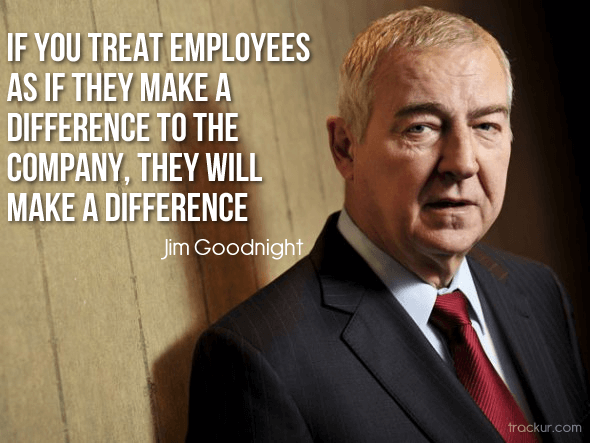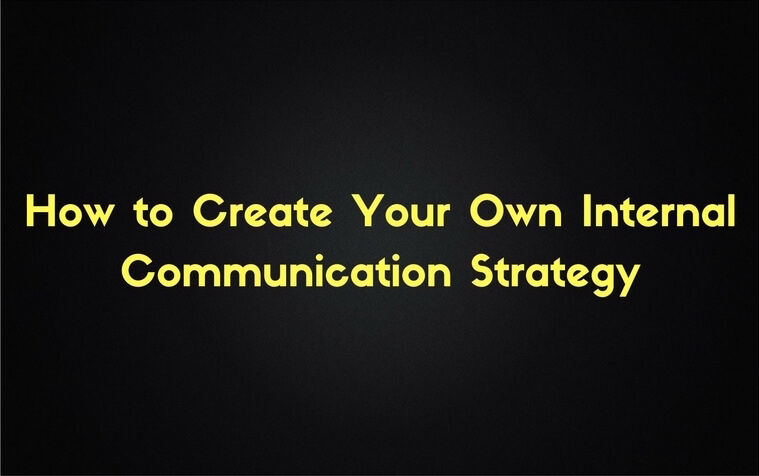Would you rather watch “The Blair Witch Project” or go to a work related training retreat? Don’t know about you but both send shivers down my spine. For most HR managers, the answer to boring training sessions has been to spice it up. But before you pick up the phone to a stand up comedian, if your communication training isn’t working maybe you should start thinking more strategically?!
But you need to be realistic and set tangible goals. So, first things first. You need an effective internal communication strategy.
Why do you need an effective internal communication strategy?
Because building a strategic communication plan can turn out to be a proactive approach for accomplishing a communicative and efficient workforce. First, get your corporate communications in check, all the rest will fall in line like perfectly set dominoes.
Successful companies create a workforce deeply focused on goals, company values, and most importantly, is united by company culture. Zillow is a company that has been recognized for doing just that; they’ve united their employees based on a shared company vision, values and culture.
So if you take away one concept from this post let it be this one:
If your employees understand, believe in, and feel represented by your company’s core values, loyalty will be the key factor affecting their decisions.
If the United States was a company then JFK’s speech on: “Ask not what your country can do for you but what you can do for your country” would have been a great HR and corporate culture triumph.

We’re not suggesting you try that speech on your workforce but it should be an inspiration for your corporate communication training strategy. You know what, here are 4 more steps you should take to make sure you’re on the right track:
Start from scratch: Write down your communication strategy
Stop! Wait a minute. Think about why you need a communication strategy? Do you want to focus your efforts on anything specific? Is there something you don’t like about the current internal communication methodology? Or do you just want to improve the overall environment and the relationships between employees? Only after you clarify the reasons behind your decision in creating a new plan will you be able to determine what you want to achieve.
To give yourself an overarching goal is very important, firstly to understand how the new strategy will really help you once you’re ready to implement it with your employees.
While putting your strategy down on paper, you should always focus on what distinguishes your company from others. The main question is: should you adopt a more formalized method or a more open and causal one?
When writing your strategy down, always be aware of the changes your organization is currently going through, or will go through in the near future. Things tend to change all the time within every company, as well as the the issues your employees are concerned about. Try to identify them (by talking with your employees) and, most importantly, make sure you take them into account when drafting your corporate communication strategy.

Download your FREE guide on “10 Tips for Engaging Your Frontline Teams” ⤵

Determine your communication strategy’s goals
After you understand the main reasons behind your decision to create a corporate communication strategy, it will be much easier to determine what you want to get out of it. Your final goals will be much clearer to achieve if your intentions are clear.
The best way to accomplish your ultimate goal is to give yourself a deadline. Creating a few smaller goals with smaller deadlines in between can also be helpful. Companies are dynamic environments, and a shorter time frame for smaller goals is always better because it adapts to your employee’s specific needs.
Remember, you can always reassess the plan based on what is relevant at any given time, which, once again, gives your employees’ needs priority and thus helps their engagement with the company.
When settling your overarching goal, remember to be reasonable and attentive not only to timing but to each employee’s capacities and strengths since they’ll be the ultimate driving force of change.

Identify different communication strategies and adapt them to different internal audiences
Being familiar with your company’s background starts with knowing your employees’ tasks and roles within the organization.
You can prioritize the different segments or “audiences” only after you have identified them and this allows you to choose the right communication channel and method for each audience you want to address your communication to.
Some communication channels surely work better for some groups than for others, and a deep analysis of the different needs can help you determine which audience fits which tool better. There are so many channels for internal communications available today, but if you manage to identify the right channel for your company’s culture you’re already halfway there.
Evaluate success

The most important part of building a corporate communication strategy, as well as of any other strategy you plan for your company, eventually comes down to evaluating whether it was successful or not.
What does success look like and how will you know when the goals have been met?
First, return to the your strategy of identifying the ultimate goal you established initially, and compare where you were to where you are now.
Did you follow the time frame you set? What has changed since then? And finally, did the changes bring about the intended benefits?
If the answer is yes, then congratulations! You’ve created an effective communication training strategy!
The implementation of an internal communication strategy can definitely bring many advantages to companies, yet a coordinated, global and long-lasting approach is always needed in order to actually benefit from it.
Always consider the communication strategy as an active part of your business plan, not just as a supplement, but as something essential to accomplish your company’s overall mission and goals.

